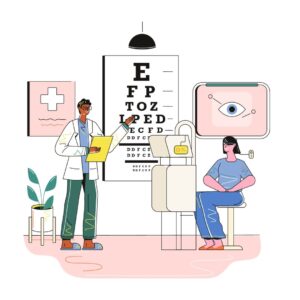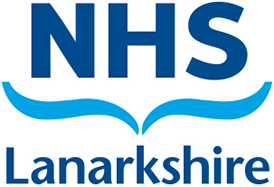Diabetic Eye Screening (DES)
Why should I attend?
In Scotland, all people with Diabetes Mellitus from the age of 12 should attend diabetic retinal screening to check if you have any signs of diabetic retinopathy. This condition occurs when the blood vessels in the retina (back of the eye) become damaged and leak, or become blocked. Left untreated, diabetic retinopathy can lead to a reduction or loss of vision.
The progression of diabetic retinopathy can be prevented as long as it is detected early through retinal screening and treated appropriately.
People attending the Diabetic Eye Screening (DES) will have a photograph taken of the back of each eye. The digital camera will not touch your eyes and you will only experience a short flash. Some people require to have eye drops administered if the images are too dark to view the retina. If you require to have eye drops instilled, it is recommended you do not drive as the eye drops cause your eyes to be blurry and sensitive to light.
If the photographs are still not of good enough quality following administration of eye drops, you may need to return for a different kind of examination using a slit lamp. This specialised equipment allows the clinician to examine your eyes using a bright light. Patients with cataracts or pupils that do not dilate often have to attend for a slit lamp examination.
The Diabetes Retinal Screening service are introducing a new type of scan and people who have a result of maculopathy (some leakage at back of the eye) will be asked to attend to have this scan carried out. The scan will determine if fluid leakage is present and, if positive, a referral to the eye clinic will be made.
The majority of patients will either have no diabetic retinopathy or mild diabetic retinopathy, with only a small number of patients (4.5% of the whole diabetic population) who require to be referred to the hospital eye clinic.

What will happen during my appointment?
People attending the Diabetic Eye Screening (DES) will have a photograph taken of the back of each eye. The digital camera will not touch your eyes and you will only experience a short flash. Some people require to have eye drops administered if the images are too dark to view the retina. If you require to have eye drops instilled, it is recommended you do not drive as the eye drops cause your eyes to be blurry and sensitive to light.
If the photographs are still not of good enough quality following administration of eye drops, you may need to return for a different kind of examination using a slit lamp. This specialised equipment allows the clinician to examine your eyes using a bright light. Patients with cataracts or pupils that do not dilate often have to attend for a slit lamp examination.
The Diabetes Retinal Screening service are introducing a new type of scan and people who have a result of maculopathy (some leakage at back of the eye) will be asked to attend to have this scan carried out. The scan will determine if fluid leakage is present and, if positive, a referral to the eye clinic will be made.
The majority of patients will either have no diabetic retinopathy or mild diabetic retinopathy, with only a small number of patients (4.5% of the whole diabetic population) who require to be referred to the hospital eye clinic.
Useful resources
CONTACT
Diabetic Retinal Screening Office Contact
Your Feedback - comments, concerns and complaints
TRAVEL DIRECTIONS
Lanarkshire Diabetic Retinal Screening Service has 6 locations:-
Central Clinic, Orchard Street, Hamilton, ML3 6PB
By car
Central Clinic is located at Orchard Street, Hamilton, ML3 6PB.
- Disabled parking is available in the car park at the centre.
- For non blue badge holders — there is a designated car park available at the centre.
By public transport
By Bus
Full details of services can be obtained from Traveline on 0871 200 22 33 or TravelineScotland.com.
By Train
There is a main train station in Hamilton which is accessible via all surrounding areas.
Please contact Network Rail customer service on 03457 11 41 41 or alternatively go to the Network Rail website for further information on stations and timetables networkrail.co.uk
Buchanan Centre, Main Street, Coatbridge, ML5 3BJ
By car
The Buchanan Centre is located at 125 – 130 Main Street, Coatbridge, ML5 3BJ.
- Disabled parking is available in the under-ground car park at the Buchanan Centre.
- For non blue badge holders — there is a designated car park available for the centre, which is a couple of minutes walk away. A coin is available at the centre to allow you to exit the car park.
By public transport
By Bus
Full details of services can be obtained from Traveline on 0871 200 22 33 or TravelineScotland.com.
By Train
There are three main train stations within Coatbridge: Blairhill, Sunnyside and Whifflet Stations.
Please contact Network Rail customer service on 03457 11 41 41 or alternatively go to the Network Rail website for further information on stations and timetables networkrail.co.uk.
Houldsworth Centre, Kenilworth Crescent, Wishaw, ML2 7LP
By car
Houldsworth Centre is located at Kenilworth Avenue, Wishaw, ML2 7BQ.
- Disabled parking is available in the car park at the centre.
- For non blue badge holders — they can also park in the car park.
By public transport
By Bus
Full details of services can be obtained from Traveline on 0871 200 22 33 or TravelineScotland.com.
By Train
There is a main train station in Hamilton which is accessible via all surrounding areas.
Please contact Network Rail customer service on 03457 11 41 41 or alternatively go to the Network Rail website for further information on stations and timetables www.networkrail.co.uk.
Cambuslang Clinic, 5 Johnson Drive, Cambuslang, Glasgow, G72 8JR
By car
Cambuslang Clinic is located at 5 Johnson Drive, Cambuslang, Glasgow, G72 8JR. A car park is located next to the health centre.
By public transport
By Bus
Plan your journey by bus using the Traveline Scotland website or telephone Traveline Scotland on 0871 200 22 33 for advice.
By Train
Cambuslang Railway Station is a 15 minute walk to the clinic.
Please contact Network Rail customer service on 03457 11 41 41 or alternatively go to the Network Rail website for further information on stations and timetables www.networkrail.co.uk.
University Hospital Hairmyres, 218 Eaglesham Rd, East Kilbride, Glasgow G75 8RG
By car
University Hospital Hairmyres is located at 218 Eaglesham Rd, East Kilbride, Glasgow G75 8RG
- Disabled parking is available in the car park at the hospital.
- For non blue badge holders—they can also park in the car park.
By public transport
By Bus
Plan your journey by bus using the Traveline Scotland website or telephone Traveline Scotland on 0871 200 22 33 for advice.
By Train
There is a station at Hairmyres, which is accessible via most surrounding areas.
Please contact Network Rail customer service on 03457 11 41 41 or alternatively go to the Network Rail website for further information on stations and timetables www.networkrail.co.uk.
Central Health Centre, North Carbrain Road, Cumbernauld, G67 1BJ
By car
Central Health Centre is located at North Carbrain Road, Cumbernauld, G67 1EU.
- Disabled parking is available in the car park at the centre.
- For non blue badge holders—they can also park in the car park.
By public transport
By Bus
Plan your journey by bus using the Traveline Scotland website or telephone Traveline Scotland on 0871 200 22 33 for advice.
By Train
There is a main train station in Cumbernauld, which is accessible via most surrounding areas.
Please contact Network Rail customer service on 03457 11 41 41 or alternatively go to the Network Rail website for further information on stations and timetables www.networkrail.co.uk.

